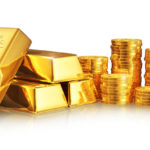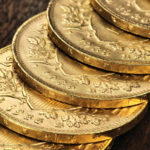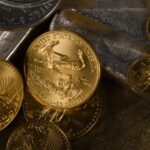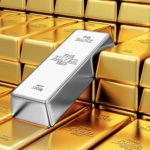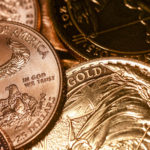Weekly Market Report 6/20/11
GOLD
Gold was up $9.90 last week, closing at $1,539.10 per ounce. The weekly high/low range was $1,543 to $1,511.40 per ounce. The past four weeks gold was never lower than $1,503, with its average price of $1,532.86. Why is this important? Well, I believe that Gold is building its base for the next breakout, taking us to well over $1,600 an ounce on its way to over $1,800 by years end.
Have you ever wondered if there really is Gold in Fort Knox? You need to see the June 23rd House of Representatives Subcommittee on Domestic Monetary Policy hearing. Congressman Ron Paul, the Chairman of that House Committee, will hear testimony from U.S. Treasury and U.S. Mint officials in an effort to conduct an audit to substantiate the authenticity and quality of our nation’s gold reserve. The Treasury document says that it would cost about $15 million to conduct this audit. This process would take about 30 minutes to verify the gold content of each bar, or 350,000 man hours, and would require 400 people working for six months, according to the document.
SILVER
Silver closed at $35.74 last Friday, down $0.58 per ounce for the week. The high/low range for the week was $36.35 to $34.40 per ounce. If you recall the week ending May 6, 2011, Silver collapsed from its high $49.21 to a low of $33.03, a 32.87% drop. The concern at that time was that Silver could continue to drop to $28. However, the past six weeks Silver has built a very strong base. Silver hit a low of $32.30 on May 12th and a high of $38.84 on May 26th, averaging $36.13 per ounce. I think that the risk/reward issue for Silver looks excellent. I believe that we will see Silver make another attempt at breaking through $40 an ounce within the next month. More international inflationary news and the lifting of the debt ceiling will add stimulus to Silver breaking out of its current trading range.
The primary issue that drove Gold and Silver trading last week was DEBT. European and U.S. Debt problems directly affected the value of the Dollar, Euro, Crude Oil, and Gold and Silver. This past week started with Standard & Poor’s announcement that they downgraded Greek debt to triple C, and ended with demonstrations and rioting in the streets of Athens.
A good way to track the Euro debt issue to see if it is improving or worsening, is to watch the Sovereign Credit-Default Swaps rates movement. Greek Debt is currently at 2238; Portugal; 812 and Ireland at 792. These rates are very near all-time highs and reflect the yearly cost for insuring 10,000 Euros of that country’s debt.
PLATINUM & PALLADIUM
Platinum dropped $81 this past week from $1,833 to $1,752 per ounce, a correction of 4.4%.
Palladium dropped $73 this past week from $816 to $743 per ounce, a substantial correction of 8.9%
(see recommended diversification below)
RARE COINS REPORT
A major coin show in Baltimore ended Saturday, and I was unable to attend. Reports from this show are identical to the Long Beach Coin Expo two weeks ago. The volume of trading has slowed down which is typical for the summer months. Trading activity was excellent for gold and silver bullion plus items. The shortage continues for certified high quality U.S. investment grade rare coins.
This Week’s recommended commitment and diversification:
Precious Metal commitment: Minimum of 30% of investable capital
Diversification: Gold 60%, Silver 30%, and Palladium 10%
Diversification includes long term numismatic investment and short term bullion products.
THE BEST GOLD AND SILVER INVESTMENTS, PART II:
Last week I recommended selling selected Gold and Silver mining stocks, funds, and Indexes, and replacing them with physical metal. The selected mining stocks I’m referring to are the ones with operations in third world countries like Peru, Chile, Bolivia and Indonesia. There is a serious risk of nationalization, union strikes, heavy government taxation, labor unrest, and environmental hold ups and costs.
Many investors consider GLD to be the easy way to invest in Gold. I want to give you
9 Reasons why I do not recommend GLD (SPDR Gold Trust - ETF) as your Gold investment
The GLD prospectus, which is similar to SLV’s prospectus, states the following:
- Shares not redeemable for physical gold
- No hedge against volatility of paper assets because it is a paper asset
- A depleting investment: fractions of gold holdings are regularly sold to offset management & other fees. Approx. ½% a year, or $7.70 an ounce (*see details below)
- Higher reporting requirements & less privacy
- You receive an annual 1099-B and since it’s a Trust you are obligated and taxed on the gross proceeds less commissions.
- Gold & Silver ETF’s are taxed at 28%, rather than the 15% rate on long-term capital gains for investments of one year or more
- Zero benefit in a worst-case scenario
- No outside independent Audit of the quantity or quality of Gold is permitted
- Counter-Party Risk - in the Dec. 14th 2008 Article, “The Problem with GLD and SLV ETFs” Trace Mayer states:“The reassertion of counter-party risk is driving much of the risk in the current markets. Page 10 of the GLD prospectus states, “If the Trust’s gold is lost, damaged, stolen or destroyed under circumstances rendering a party liable to the Trust, the responsible party may not have the financial resources sufficient to satisfy the Trust’s claim.” On page 9, “The Trust does not insure its gold.” Further on page 12, “Gold held in the Trust’s unallocated gold account and any Authorized Participant’s unallocated gold account will not be segregated from the Custodian’s assets. If the Custodian becomes insolvent, its assets may not be adequate to satisfy a claim by the Trust or any Authorized Participant. In addition, in the event of the Custodian’s insolvency, there may be a delay and costs incurred in identifying the bullion held in the Trust’s allocated gold account.” Gold is not subject to counter-party risk or in other words the financial ability of a counter-party to pay. Clearly, GLD is impregnated with counter-party risk that may instantly and violently appear from within like the Alien.”
*(from #3 above) GLD management is allowed to sell gold to cover these expenses. Each sale of gold by the trust is a taxable event to shareholders; therefore GLD shareholders receive a 1099-B every year with a tax liability. Since gold does not produce any income, GLD’s management fee along with any sponsor, marketing or storage fees must be paid by liquidating Gold, estimated at ½% per year. This diminishes the overall underlying assets per share, which, in turn, can leave investors with a representative share value of less than one-tenth of an ounce of gold over time. This can lead to discrepancies in the actual value of the underlying gold asset and the listed value of the ETF.
When comparing a GLD Gold investment to a bullion gold coin investment, the bullion coins do not require an annual 1099-B form, and don’t lose ½% percent of value from management fees or costs.
Next week in “THE BEST GOLD AND SILVER INVESTMENTS, PART III”, I will address the myths and misunderstandings of owning physical gold over EFT’s. The truth will shock most people of how easy it is to own physical gold. I’ll also cover the benefits and advantages of various gold and silver bullion coins. All this will be available in next weeks report and thank you for reading the Weekly Precious Metals & Rare Coin Report.
Barry Stuppler


